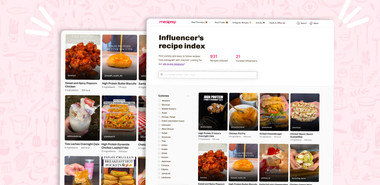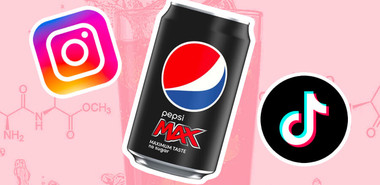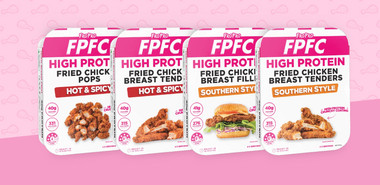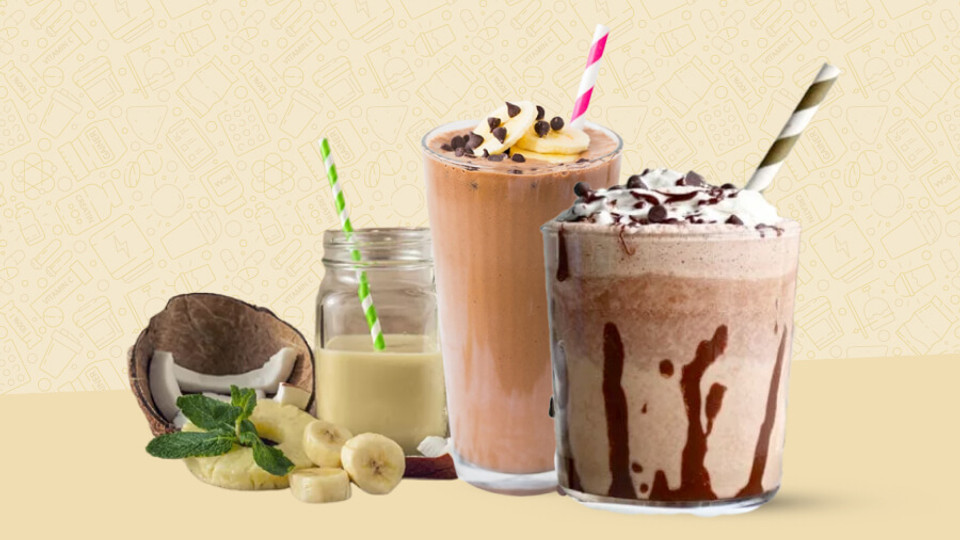
Are you looking for a delicious and easy way to boost your weight loss goals? Look no further than smoothies! With the right ingredients and a little meal prep know-how, these tasty drinks can help support your diet and fitness efforts. In this post, we’ll share tips for choosing ingredients, tasty recipe ideas, and helpful meal prep strategies to make sure you get the most out of your smoothies.
Whether you’re new to the world of smoothies or a seasoned pro, we’ve got something for you. AND, they’re all under 300 calories – how good!? So, let’s get blending and get ready to reach your weight loss goals.
Green Light Ingredients for Your Weight Loss Smoothies
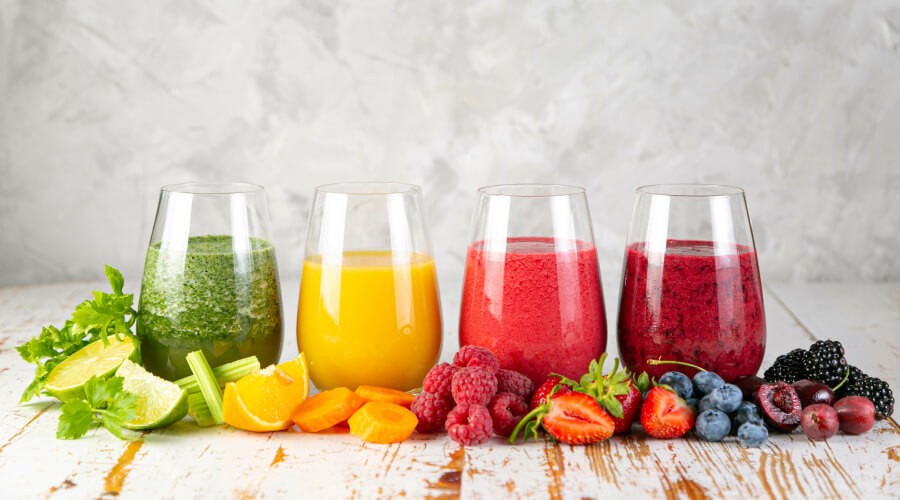
Here are some healthy smoothie ingredients you can add to your smoothies to boost their nutritional value:
- Berries (strawberries, blueberries, raspberries): These are packed with antioxidants and vitamins that can help protect your body from disease.
- Leafy greens (spinach, kale, romaine): Leafy greens are low in calories and high in nutrients like iron, potassium, and Vitamin K. They also provide a boost of fibre, which can help keep you feeling full.
- Greek yogurt: This a great source of protein and calcium, which can help keep you feeling full and can support muscle growth.
- Chia seeds or flax seeds: These tiny seeds are packed with healthy fats and fibre, which can help keep you feeling full and support heart health. They are also a great source of omega-3 fatty acids.
- Cucumber: Cucumbers are hydrating and low in calories, they are a great source of antioxidants, and they are also a good source of vitamin K which promotes healthy bones.
- Protein powder: Protein powder can help support muscle growth and repair, and it can also help keep you feeling full.
- Ginger or Turmeric: Both ginger and turmeric have anti-inflammatory properties, which can help to reduce inflammation in the body, they also help to boost digestion and metabolism.
Of course, we wouldn’t recommend adding all these ingredients at once – that probably wouldn’t taste too good. You might need to try different flavour profiles and experiment with different ingredients to find the taste that works for you and achieve your dietary needs.
Orange Light Ingredients for Your Weight Loss Smoothies
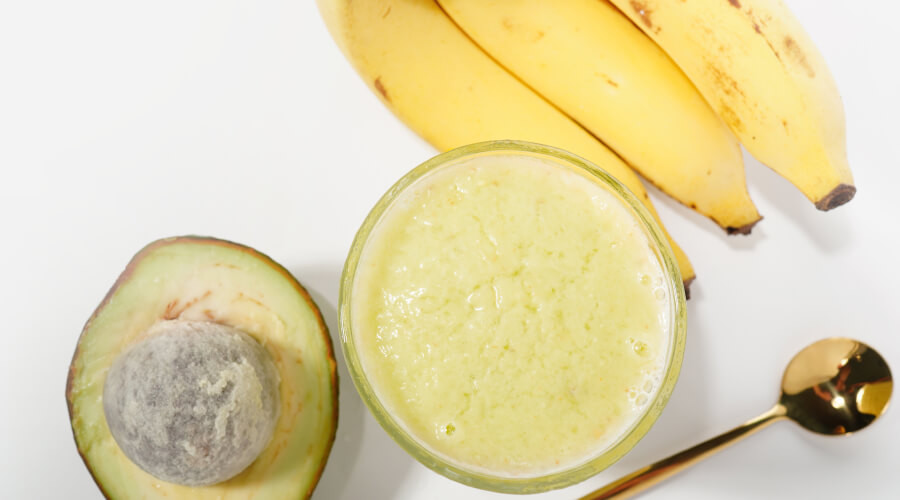
While many ingredients can be healthy and nutritious when added to smoothies, some ingredients do have a higher calorie count and should be included in. Here are a few examples:
- Peanut butter: Peanut butter is a great source of healthy fats and protein, but it is also high in calories, with about 190 calories per 2 tablespoon serving. It’s recommended to use 1 tablespoon per serving or less.
- Avocado: Avocado is another ingredient that is high in healthy fats, but it is also relatively high in calories, with about 234 calories per medium-sized avocado. A small portion of avocado can be used to add healthy fats to your smoothies without adding too many calories.
- Nuts (almonds, walnuts etc): Nuts like almonds and walnuts are a great source of healthy fats and protein, but they are also high in calories, with about 170-185 calories per 1/4 cup. It’s recommended to use small portions of these nuts, no more than 1-2 tablespoons per serving
- Banana: Banana is a great source of potassium and dietary fibre, but it is also relatively high in calories, with about 105 calories per medium-sized banana. Using half a banana or less can still provide the same nutritional benefits without adding too many calories.
- Coconut Milk: Coconut Milk is high in healthy fats and calories, with about 440 calories per cup. It’s recommended to use a 1/4 or 1/2 cup per serving, or use the light version of coconut milk which typically has less calories.
- Honey: Honey is a natural sweetener that can be used in smoothies as an alternative to processed sugars and contains antioxidants, enzymes, and minerals such as iron, zinc, potassium and calcium. However, like other sweeteners, it is high in calories – one tablespoon of honey contains around 64 calories. It’s a good idea to use it sparingly and combine it with other low-calorie sweeteners like Stevia.
These ingredients can be great in moderation, but it’s important to keep an eye on the amount you are using to avoid overloading your smoothie with too many calories.
What’s the Lowest Calorie Milk to Use in Weight Loss Smoothies?
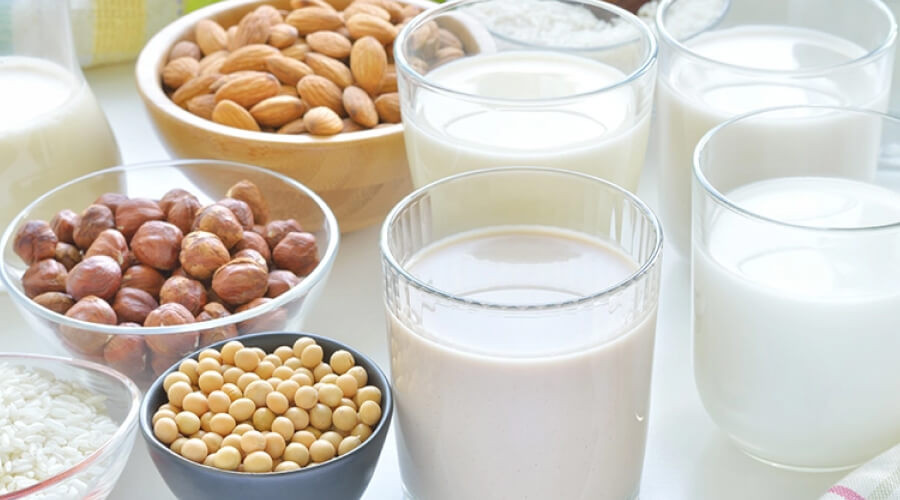
There are a few low-calorie milk options that you can use in your smoothies:
- Skim milk: Skim milk has the lowest amount of calories among cow’s milk options, with about 83 calories per cup. It also contains the same amount of protein, calcium, and other nutrients as whole milk.
- Almond milk: Almond milk is a popular plant-based milk alternative that is low in calories, with about 30-60 calories per cup. It is also low in fat and high in Vitamin E. However, it is not a good source of protein like cow’s milk.
- Soy milk: Soy milk is another plant-based milk alternative that is low in calories, with about 80-100 calories per cup. It also contains about 6-8 grams of protein per cup.
- Oat Milk: Oat Milk is becoming increasingly popular, and it’s a good option for those who are lactose intolerant or vegan, it’s also relatively low in calories with about 130-140 calories per cup.
- Rice Milk: Rice Milk is another alternative to cow’s milk, made from milled rice, it contains about 120-130 calories per cup, and it’s a good source of carbohydrates, but is not a good source of protein like cow’s milk.
- Coconut water: Coconut water is a good source of hydration and it can bring a unique taste to your smoothie while being low in calories. A typical serving of coconut water contains about 46 calories. Iit also contains naturally occurring electrolytes, like potassium and sodium, which can help to rehydrate your body and replace electrolytes lost through sweating.
Ultimately, you should choose the one that fits your dietary preferences and experiment with the taste and texture, and remember to check the label for added sugar or thickeners. You can also simply use water in your smoothies!
10 Fat-Burning Weight Loss Smoothie Recipes
With all these below recipes, there’s nothing special to do except add it all to a blender and blend! Easy peasy.
1. Berry Blast Smoothie – 228 calls
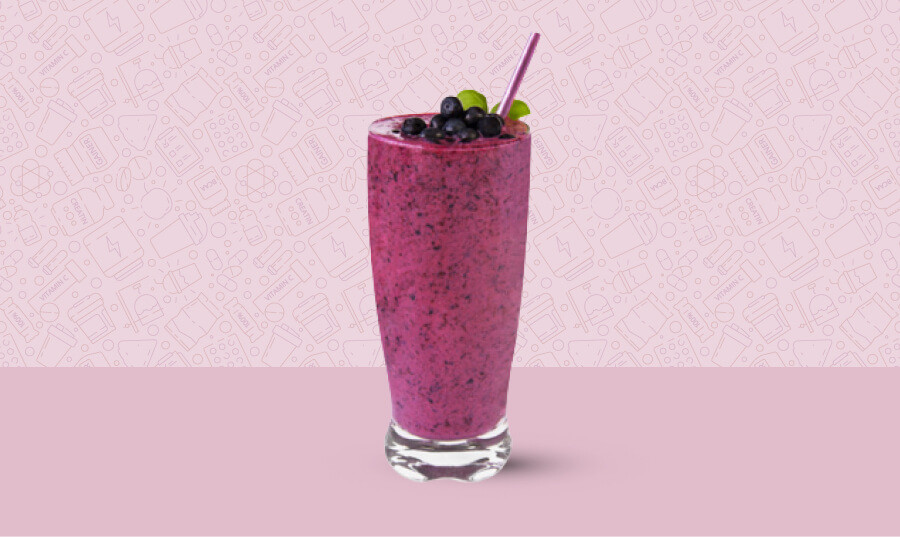
- 1 cup Greek yogurt plain
- 1 cup frozen organic berries (blueberries, strawberries, or açai berries make great choices)
- 0.5 tsp vanilla extract
- 1 Tbsp chia seeds ground
- 1/2 cup ice
2. Go-To Green Smoothie – 215 Calories
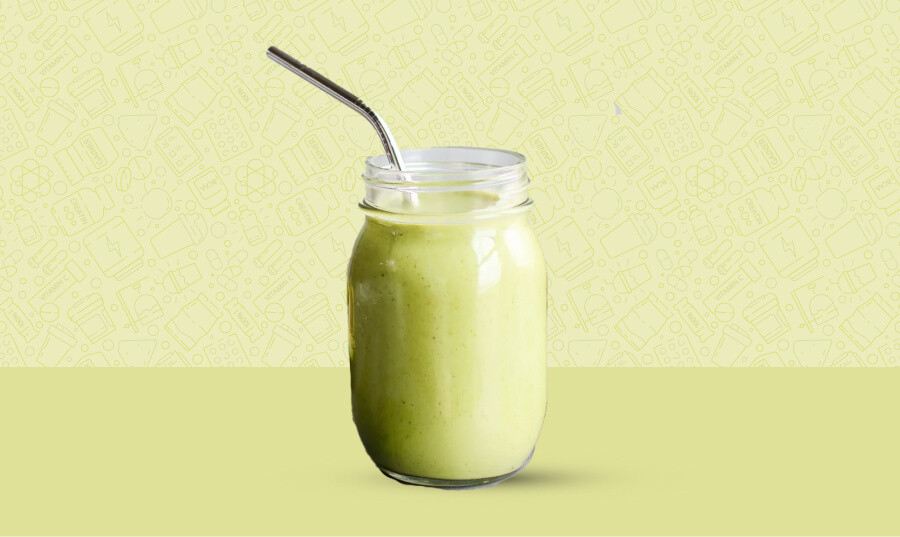
- 1–1/2 cups ice
- 1 medium banana, fresh or frozen (may sub 1 cup fruit of choice such as green apple, frozen pineapple, or mango)
- 2 handfuls of spinach or greens of choice
- ½ avocado
- 1 ½–2 cups milk of choice
- 2 scoops protein powder of choice
3. Mocha Frappe (Dairy Free) – 225 Calories
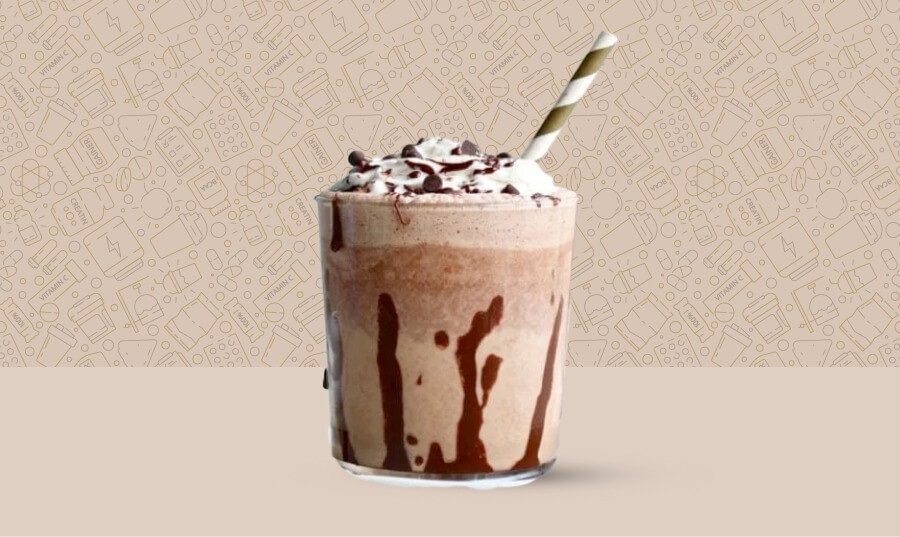
- 1 ½ cups coffee, frozen into cubes
- 1 ½ Tbsp. unsweetened cocoa powder
- 1 Tbsp. maple syrup or honey
- 1 ½ tsp. vanilla extract
- ¾ cup ice
- Milk of choice (1 to 1 1/2 cups)
4. Strawberry Oat Smoothie – 280 calories
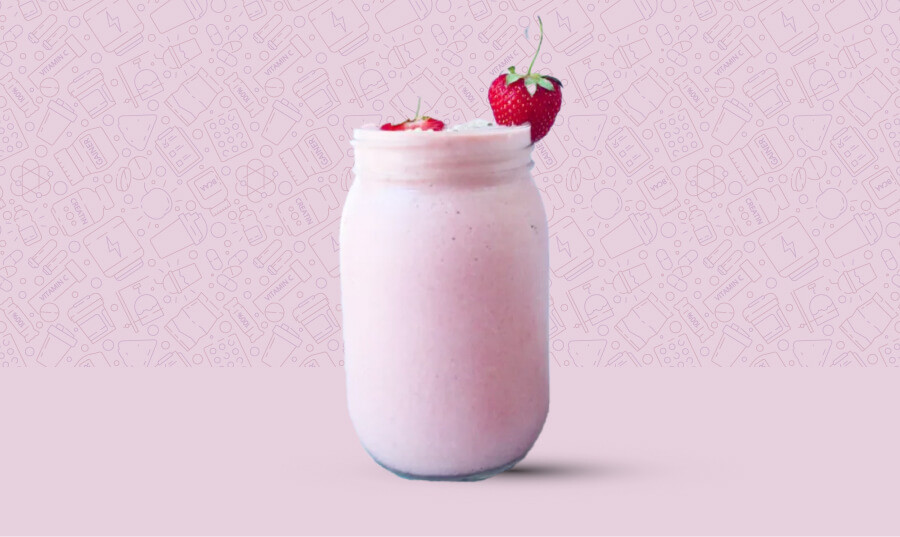
- 1 cup sliced strawberries
- 1/2 banana
- 1 cup nonfat milk
- 1/4 cup rolled oats
- 1 teaspoon honey
- 1/4 teaspoon vanilla
- 1/2 cup ice
5. Tropical Smoothie – 277 Calories
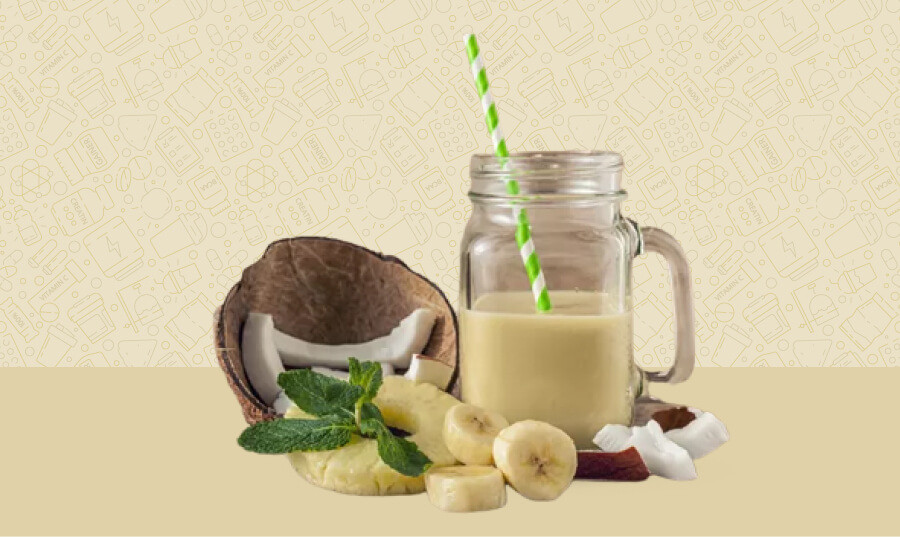
- 1 cup fresh pineapple chunks
- 1 small frozen banana
- 1/2 cup coconut-flavoured yogurt
- 1/4 teaspoon vanilla
- 1/4 teaspoon ground ginger (or even better use a little chunk of fresh ginger)
6. Chocolate Coconut Banana Smoothie – 183 Calories
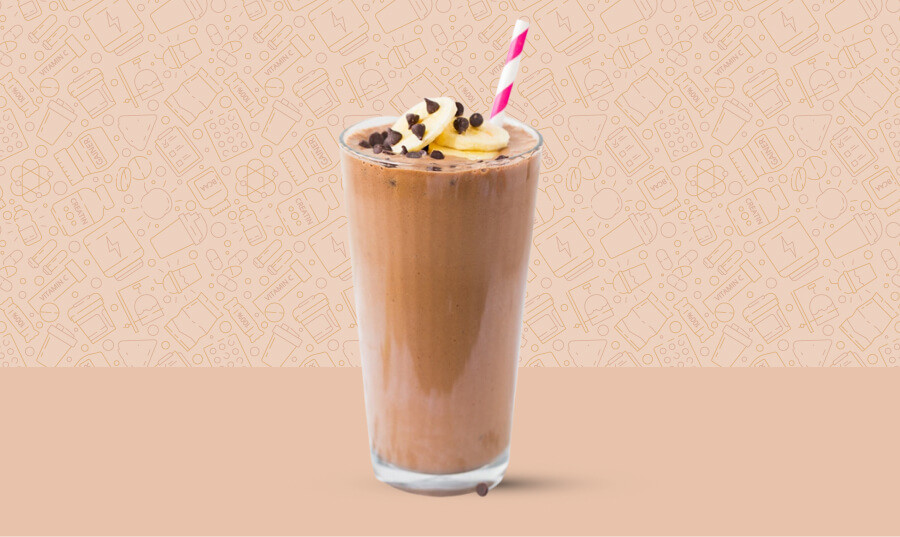
- ½ cup plain Greek yogurt
- 1 small banana, peeled, sliced, and frozen
- 1⁄2 cup ice
- 1⁄2 cup unsweetened coconut milk
- 1 Tbsp unsweetened cocoa powder
- 1 Tbsp honey
- 1⁄2 tsp vanilla
- 1 Tbsp unsweetened flaked coconut, toasted
- 1 Tbsp finely chopped dark chocolate
7. Green Matcha Tea Smoothie – 226 Calories
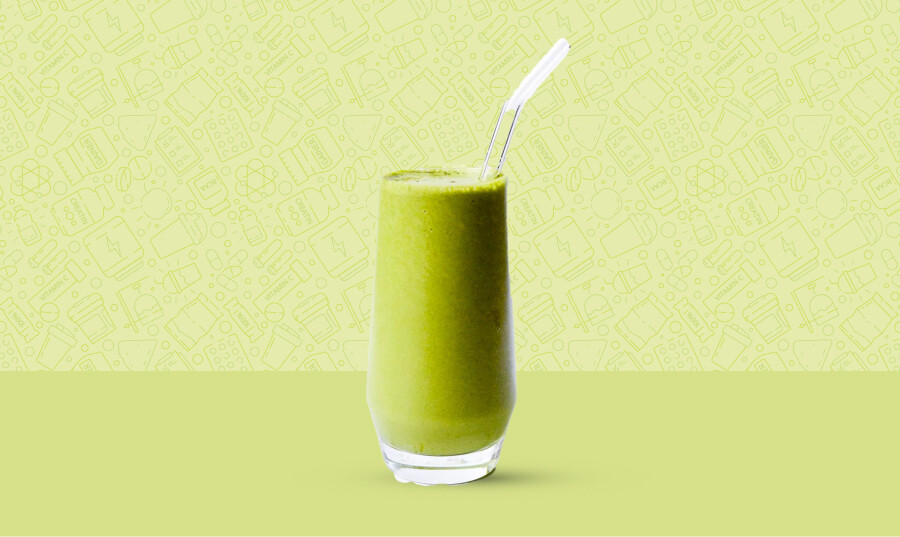
- ½ cup baby spinach, loosely packed
- ½ frozen banana
- 1 teaspoon matcha green tea powder
- 1 teaspoon ground cinnamon
- 1 scoop vanilla plant-based protein powder
- Water to blend (optional)
8. Blueberry Chia Smoothie – 297 Calories
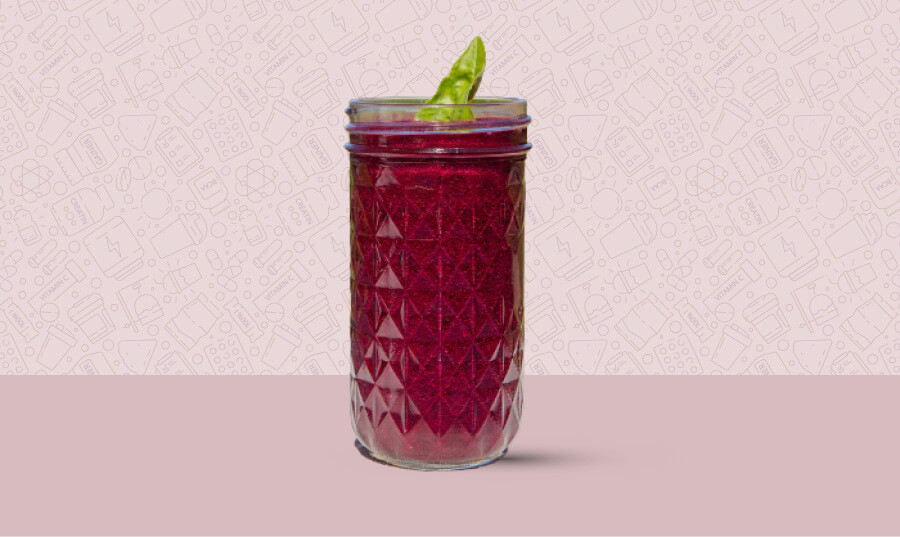
- 1 cup blueberries
- 1/2 banana
- 1/2 cup nonfat milk
- 1/2 cup plain nonfat Greek Yogurt
- 1 tablespoon chia seeds
- 1/2 cup ice
9. Healthy Kale Smoothie – 217 Calories

- 1 cup kale
- ½ cup chopped cucumber, peeled and seeded
- ½ pear, seeded and quartered
- Squeeze of fresh lemon juice
- 1 scoop plain or vanilla plant-based protein powder
- ½ cup water
- 2 ice cubes
How to Meal Prep Weight Loss Smoothie Recipes (Freezer Friendly)
Meal prepping is a great way to make sure you always have healthy and delicious smoothies on hand to support your weight loss goals. One of the best ways to meal prep smoothies is to make them freezer-friendly. This way you can make a big batch of smoothies, store them in the freezer, and then just take one out and thaw it when you’re ready to enjoy it. Here’s how to get started:
- First, choose your favourite weight loss smoothie recipes. Keep in mind that fruits that are high in water content such as berries, cucumber, and watermelon are great choices for freezing. Ingredients like Greek yogurt, chia seeds, and spinach also freeze well.
- Next, blend the smoothies according to the recipe, but don’t add any ice. Then, pour the smoothies into individual freezer-safe bags or containers, leaving about an inch of space at the top of the container to allow for expansion.
- Seal the bags or containers, label them with the name of the smoothie and the date, and place them in the freezer.
- When you’re ready to enjoy your smoothie, take it out of the freezer and allow it to thaw in the fridge. You can also thaw it in the microwave if you are in a hurry. Once it’s thawed, give it a good shake or stir to get everything mixed together again. You may also want to add a splash of water or additional liquid to thin it out a bit before drinking it.
Best Storage for Weight Loss Smoothies
- Plastic freezer bags: Plastic freezer bags are a great option for storing smoothies. They are inexpensive, lightweight, and easy to seal. They can be labelled easily and you can lay them flat in the freezer, which is a great space saver.
- Glass mason jars: Glass mason jars are a great option for storing smoothies because they are durable and won’t absorb odours or flavours. They also have a tight-fitting lid which can prevent leaks and spills. Just be sure to leave some room at the top of the jar for expansion and let the jars cool to room temperature before adding the smoothie, to prevent the glass from breaking due to thermal shock.
- Plastic containers with tight-fitting lids: Plastic containers are another good option for storing smoothies. They are lightweight and come in different shapes and sizes. You can choose a container size according to the number of servings you want to prepare and it’s easy to stack them in the freezer.
- Silicone ice cube trays: Another great way to freeze smoothies is by filling ice cube trays. Silicone ice cube trays are flexible, easy to clean, and you can pop out one or two cubes as you need them.
Are Meal Replacement Smoothies Good for You?
Meal replacement smoothies can be a great way to add more nutrients to your diet and help with weight loss. They’re also super convenient for busy people who want to save
time on cooking and cleaning.
When used correctly, these smoothies can be a healthy option for a meal. But, it’s important to make sure they have a balance of carbs, proteins, and healthy fats, as well as vitamins and minerals. You also gotta pay attention to the calorie count and make sure it fits with your daily calorie intake.
A good meal replacement smoothie should be low in added sugar and avoid artificial sweeteners. Using natural ingredients like Greek yogurt, berries, leafy greens, healthy fats like chia seeds or avocado, and protein powder can make a tasty and balanced meal replacement smoothie.
Just keep in mind that relying only on smoothies for nutrition isn’t ideal and can lead to nutrient deficiencies if you’re not careful. At the end of the day, a diet with whole foods should be your main source of nutrition. And always talk to a doctor before making big changes to your diet.
A Note on Smoothie Portion Control
Portion control is key when it comes to making smoothies. Sure, they’re delicious, but if you’re not paying attention to how much you’re putting in the blender, you could be adding a lot of extra calories without even realising it. For example, a cup of frozen berries may only be around 80 calories, but if you’re adding like 4 cups of them, that’s over 300 calories!
And that’s not even counting the other ingredients you add.
And, even healthy ingredients can add up in calories if you use too much of it. That’s why it’s important to measure your ingredients and pay attention to serving sizes. And if you’re using store-bought smoothies or juices, read the label and watch out for added sugar, it can ruin your weight loss goals or cause an imbalance in your diet.
Smoothies can be a delicious and convenient way to support your weight loss goals. With the right ingredients and proper portion control, you can create a well-balanced smoothie that is low in calories, high in nutrients and tailored to your taste buds.
Meal prepping and using the freezer-friendly options are also great ways to ensure that you always have a healthy smoothie on hand. Remember to use natural and high-quality ingredients, be mindful of the calorie count and added sugars, and consult with a healthcare professional before making significant changes to your diet.
